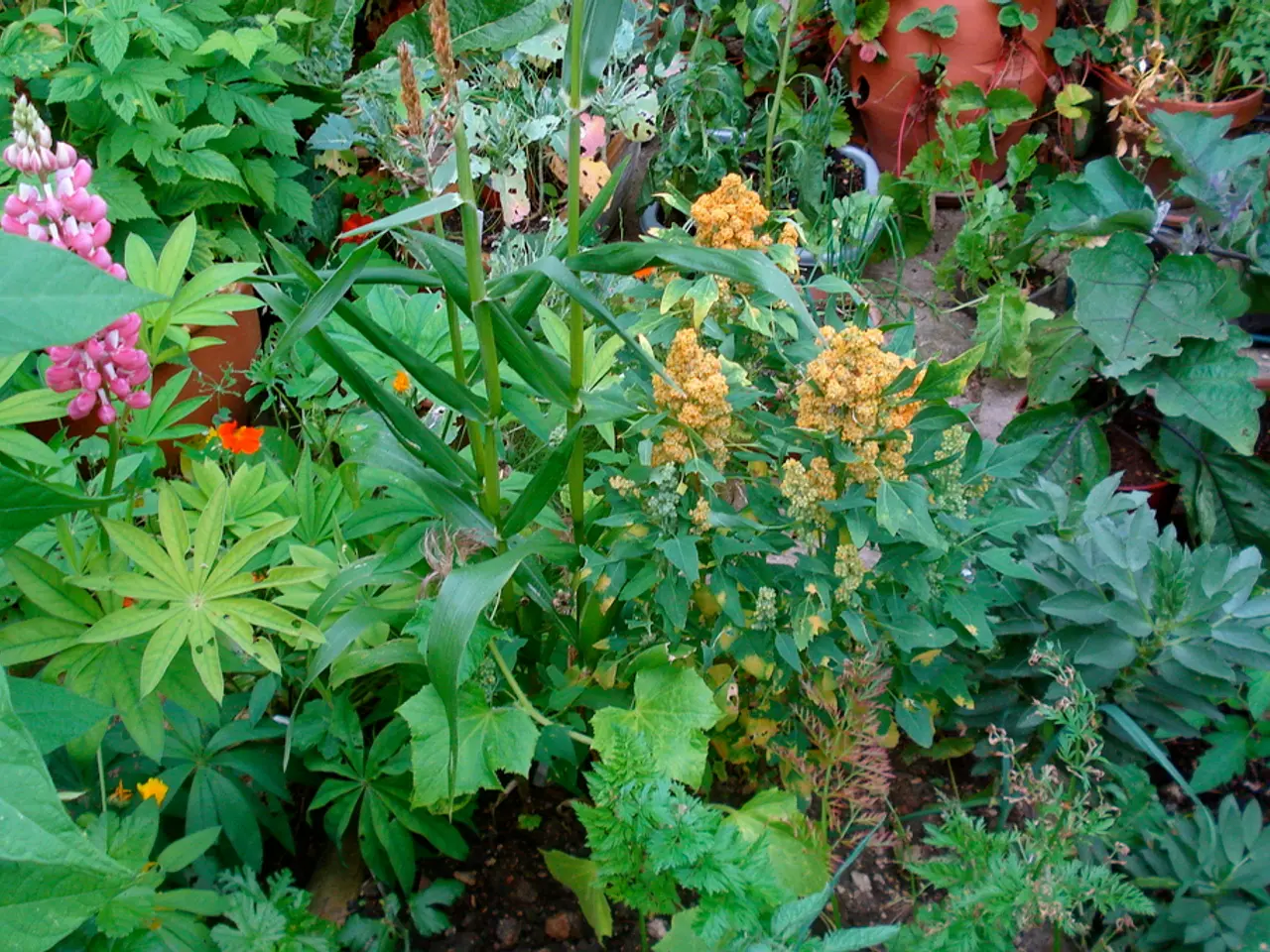Guide for a Thriving Greenhouse Garden: Strategies and Suggestions
In the realm of greenhouse gardening, planning and strategy are key to a bountiful harvest. Here's a guide to help you make the most of your greenhouse space with companion planting, succession planting, and hydroponics.
Companion Planting
By growing plants that benefit each other when close together, you can optimise your greenhouse space and ensure the health of your plants. For instance, certain herbs can repel pests from vegetables, while some plants can improve soil nutrients for their neighbours. Make a list of which plants grow well together inside your greenhouse for a harmonious garden.
Succession Planting
To continuously harvest crops, practice succession planting by sowing seeds in intervals rather than all at once. This is especially easy in greenhouses due to the controlled climate. You can start seedlings in trays (seed trays or hydroponic trays), transplant them as they grow, and keep planting new seeds every few weeks for a steady supply of fresh produce.
Hydroponics
Consider using hydroponics, a method of growing plants without soil in nutrient-rich water. This can be done with specialized hydroponic trays and containers inside your greenhouse. Hydroponics often speeds up growth and reduces pests and diseases associated with soil. Make sure to get sterile growing mediums and control water nutrients carefully for best results.
Additional Tips
- Start seeds smartly by understanding seed labels and over-sowing to select the strongest seedlings.
- Use sterile soil or growth mediums to prevent diseases and pests.
- Ensure adequate ventilation to regulate temperature, reduce humidity, and prevent disease.
- Evaluate light availability and supplement with grow lights if needed.
- Regular watering and feeding of young plants according to each species' needs are critical for healthy growth.
Hydroponic Techniques
A vertical tower garden, a Kratky method bucket, and an NFT system are some hydroponic techniques for greenhouse gardens. Cucumbers thrive in Kratky method hydroponics, while peppers are ideal for aeroponics. Hydroponics can help alleviate the thirstiness of cucumber plants and extend the growing season compared to an open garden.
Utilising Greenhouse Real Estate
Hydroponics is an excellent option for a greenhouse garden, especially when the greenhouse does not have soil but a solid floor. Containers can be used for growing plants in addition to soil inside a greenhouse. Greenhouse real estate is valuable and should be utilised all season long. The greenhouse layout can be planned on a piece of paper, using a measuring tape to determine the length and width of each bed.
Season Extension
A greenhouse can extend the growing season compared to an open garden. Cold-hardy peas can be grown as early as March in a greenhouse. Tomatoes can be pruned to a single stem, making it easier to manage and requiring very little space.
Planning Your Greenhouse Garden
Following these tips and ideas can help in planning and maintaining a thriving greenhouse garden. A garden planner can be a useful tool for organising your greenhouse garden. By combining these strategies—companion planting to optimise plant relationships, succession planting to extend harvest periods, and hydroponic systems for efficient growth—you can make your greenhouse garden productive year-round. A greenhouse garden can be used to expand gardening possibilities and provide fresh produce and beautiful flowers.
- In a greenhouse garden, hydroponics can help optimize space and growth, especially for soil-less greenhouses.
- By using succession planting techniques, you can continuously harvest crops in your greenhouse and create a steady supply of fresh produce.
- In companion planting, certain plants can benefit each other when grown together, fostering a harmonious garden inside the greenhouse.
- For an efficient and productive greenhouse garden, consider implementing hydroponic systems such as vertical tower gardens or NFT systems for faster growth and reduced pests.
- When utilizing greenhouse real estate, don't forget that containers can also be used for growing plants, making the most of your valuable greenhouse space.
- With thorough planning, including the use of a garden planner, and the implementation of strategies like companion planting, succession planting, and hydroponics, you can create a beautiful, productive garden in your greenhouse, expanding your home-and-garden lifestyle year-round.




